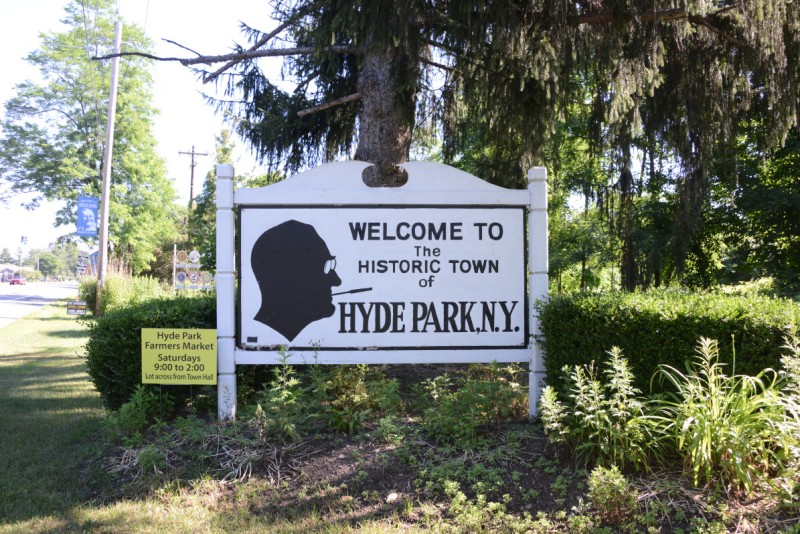
Franklin Delano Roosevelt was born in 1882 in his parents’ house at Hyde Park, New York, and he lived here throughout his life.
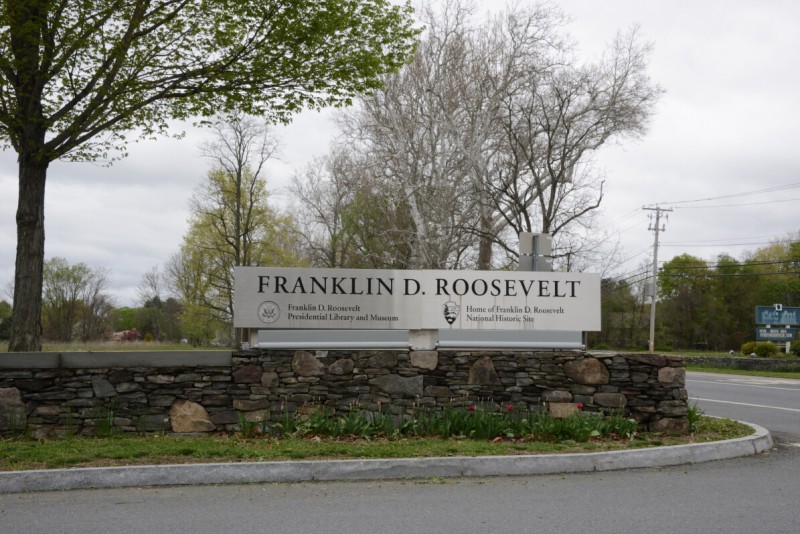
FDR was among the first presidents to establish their own legacy park during their lifetime.
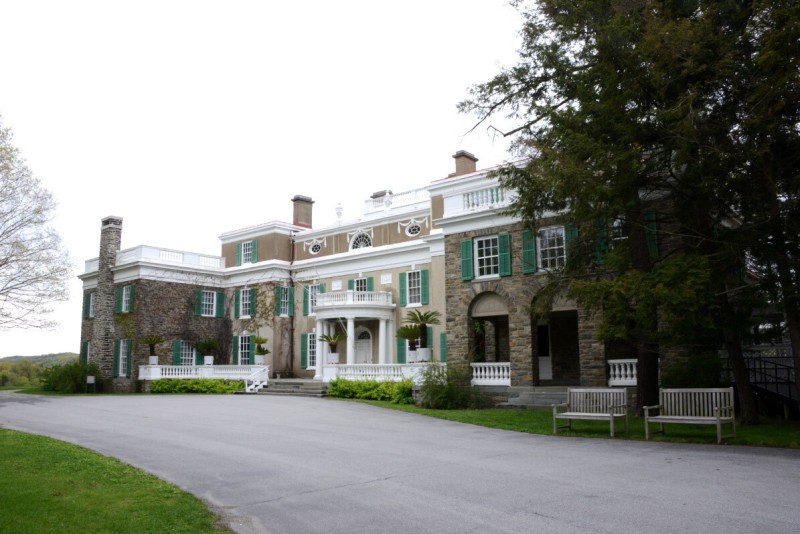
FDR was born on the second floor of this mansion, a 116-acre estate that his father purchased and named Springwood. Over the years, his father expanded the house and acreage until his death in 1900.
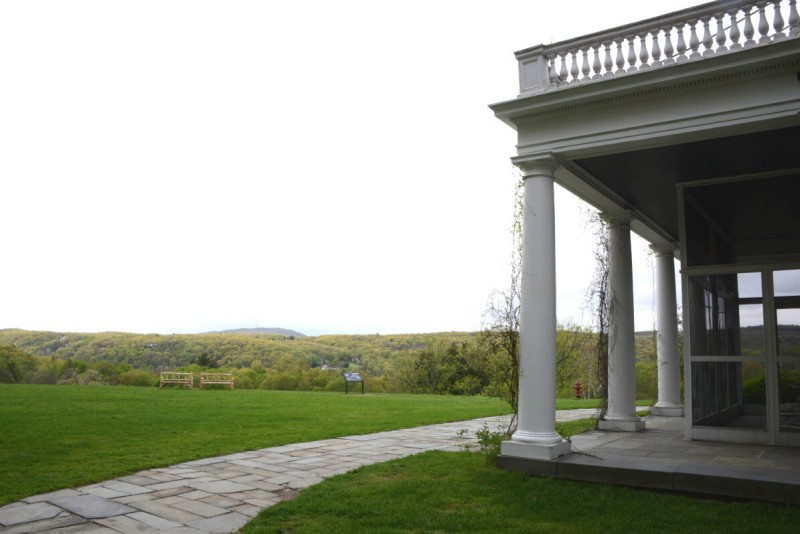
The Hudson River flows just below the home, and the Vanderbilts built an opulent mansion up the road in 1899.
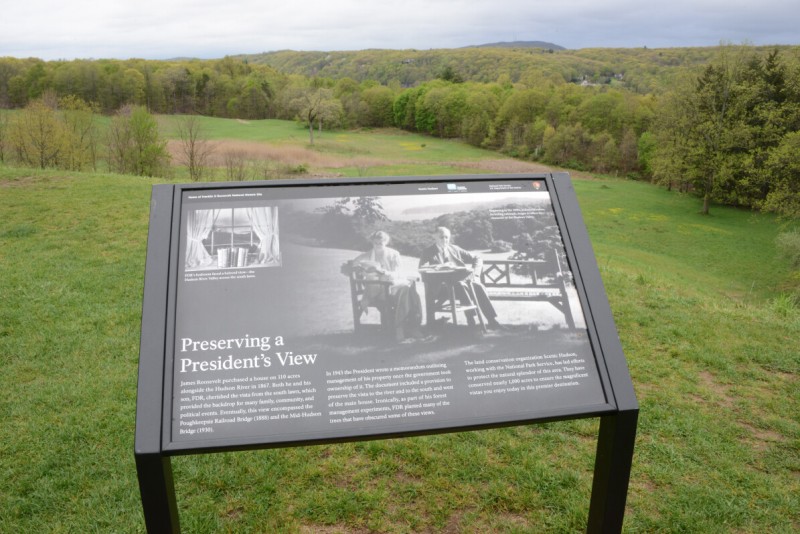
Franklin married Eleanor Roosevelt (who already shared his last name, as she was his fifth cousin, and Theodore Roosevelt’s niece) in 1905, and the couple moved into Springwood. More additions were made, and the house grew to its current 35 rooms.
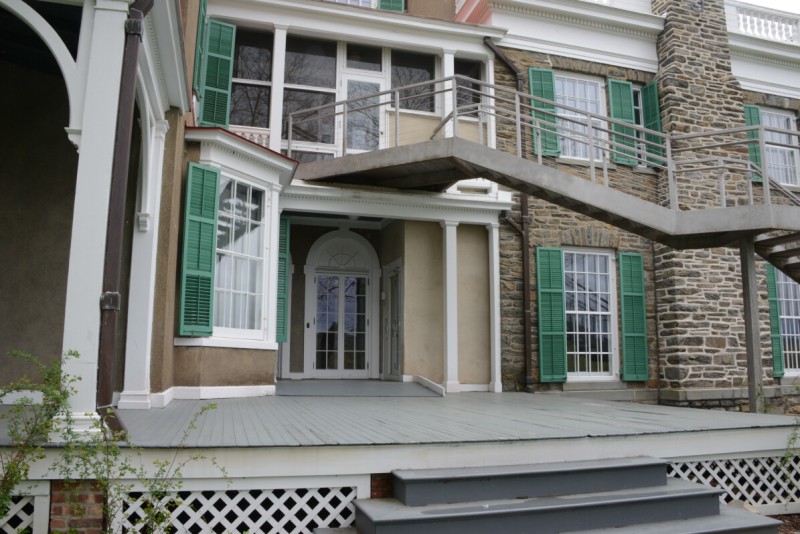
Famous for the New Deal and an unprecedented third and then fourth term during World War Two, FDR spent a lot of time at Hyde Park when he was president, and many of the historic events and meetings of his administration occurred here.
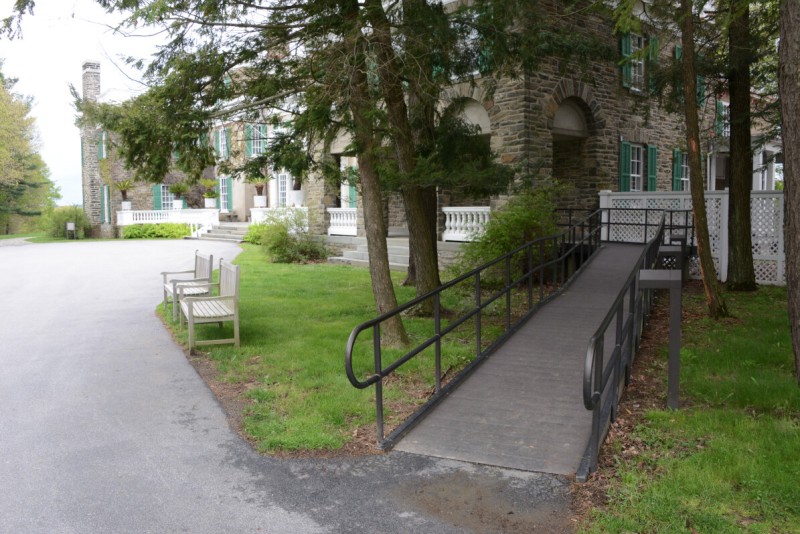
Well aware of its historic importance, even before the war, he gave Hyde Park to the federal government in 1938, while continuing to live there.
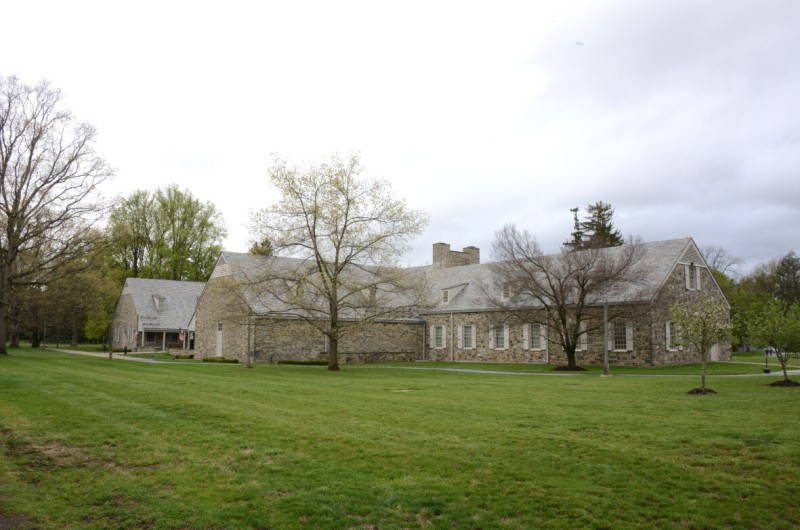
The following year he designed and built his presidential library on the grounds.
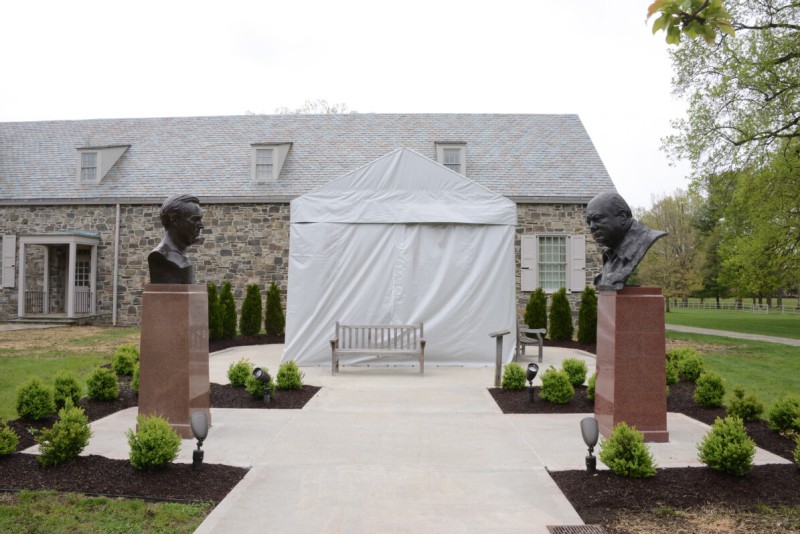
This too he donated to the government, in 1941, while continuing to use it as an office. The library was the first of the thirteen presidential libraries currently managed by the National Archives, and built by presidents or their heirs.
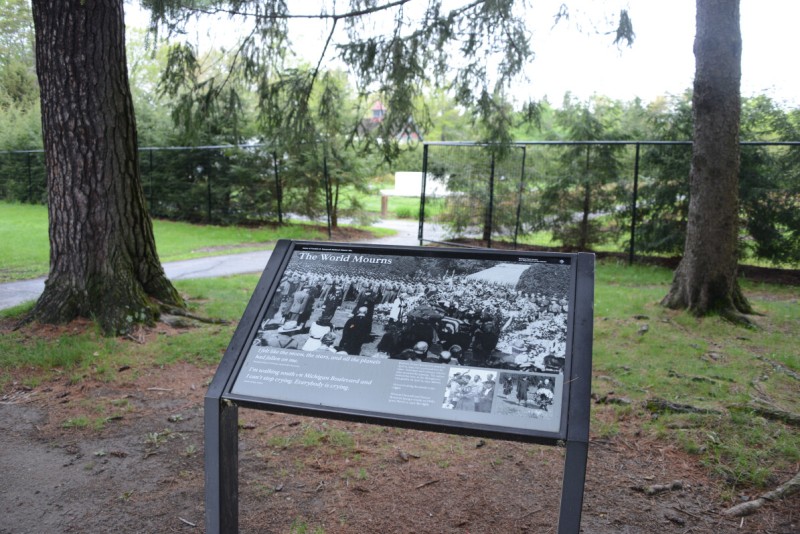
FDR died in 1945, at the resort area in Warm Springs, Georgia that he often visited to soothe the effects of polio, which he suffered from for most of his life. He had just started his fourth term as president.
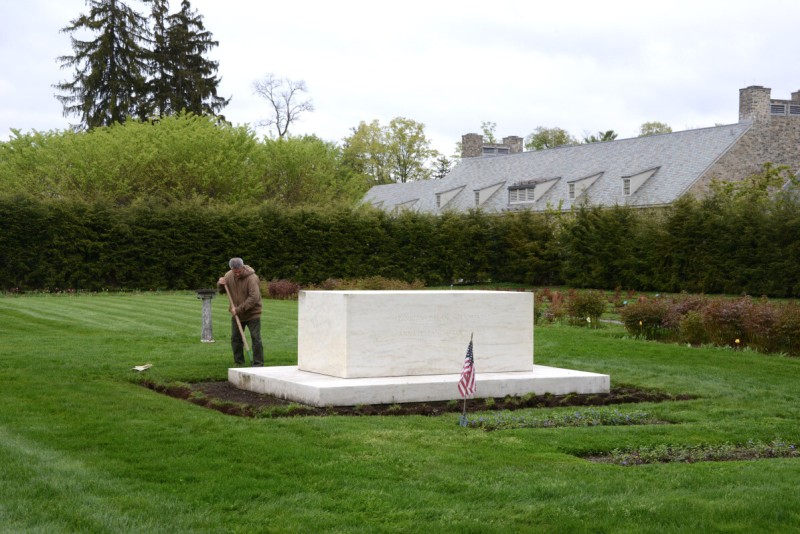
His body was brought to Hyde Park, and to his tomb in the rose garden, which was later shared by his wife Eleanor, and their dog.
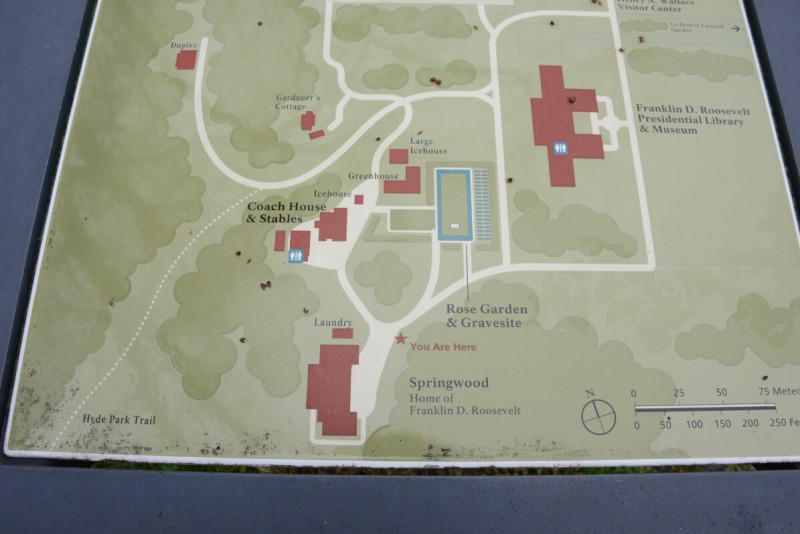
In 1946, the home and property was opened to the public. Though visitation has been as high as close to half a million visitors a year in the past, today it is closer to 100,000.
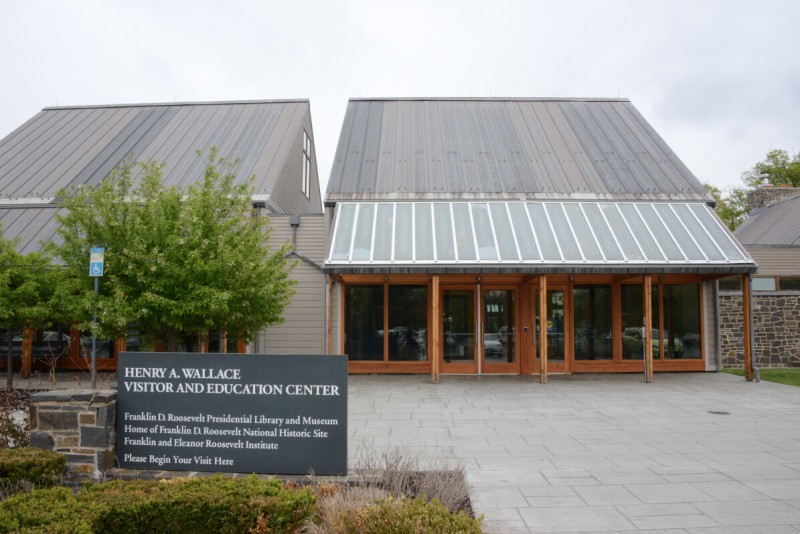
To accommodate the crowds, a new visitor center was built in 2003.
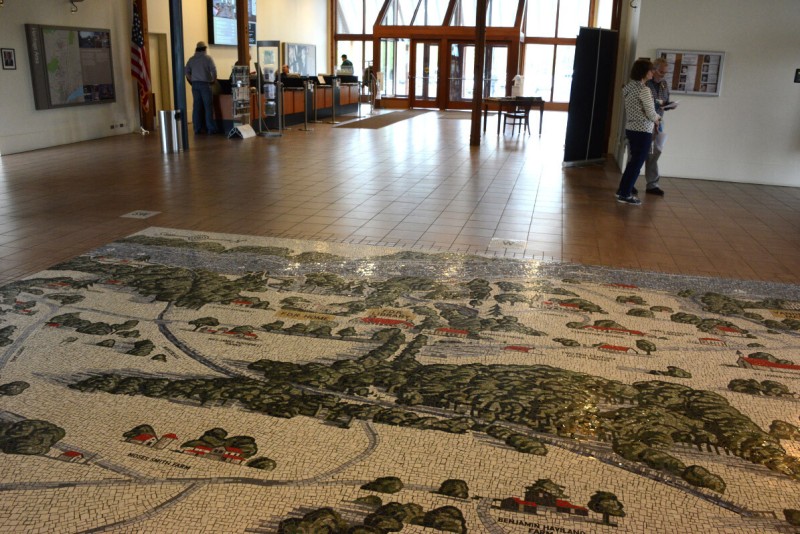
There is a large mosaic of FDR sites on the floor, near the admission counters and the large gift shop.
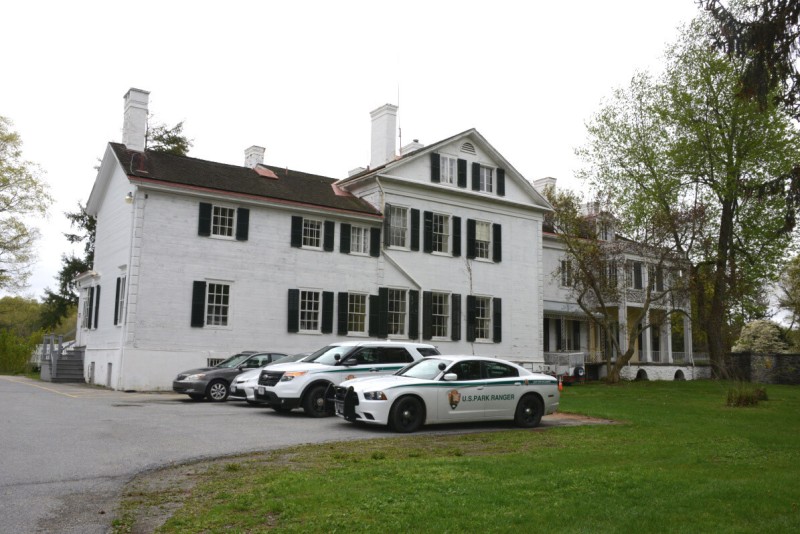
The visitor center was built on land that had belonged to an adjacent estate, Bellefield. Its owners donated it to the government in 1975 to support the FDR Historic Site, and it is used for administration purposes by the National Park Service.

Eleanor Roosevelt had personal issues with her mother-in-law, Sara (who lived at Hyde Park until her death in 1941), and with her husband, FDR too, for that matter. With her own personal wealth, social prominence, and strong values, she conducted her life out of an estate nearby, Val-Kill.
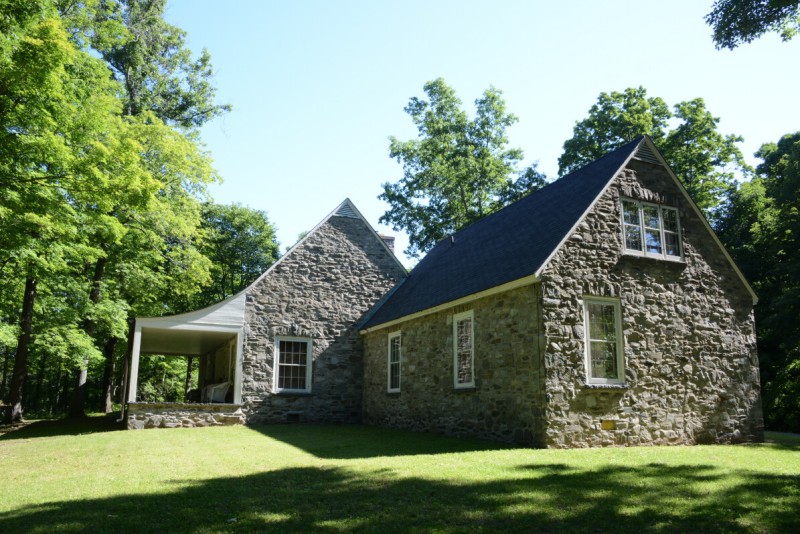
This was FDR’s getaway place, which he designed and built for himself in 1939, on top of the hill overlooking his estate and the Hudson Valley below.

Other buildings were added, including a factory, used for the production of local crafts and cottage industries.
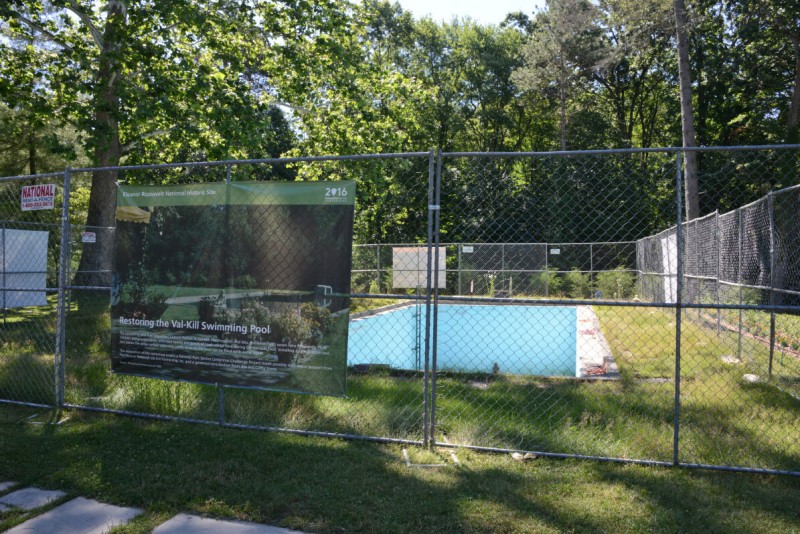
Owned by the Roosevelts until the 1970s, it became the Eleanor Roosevelt National Historic Site in 1977, and opened to the public in 1984.
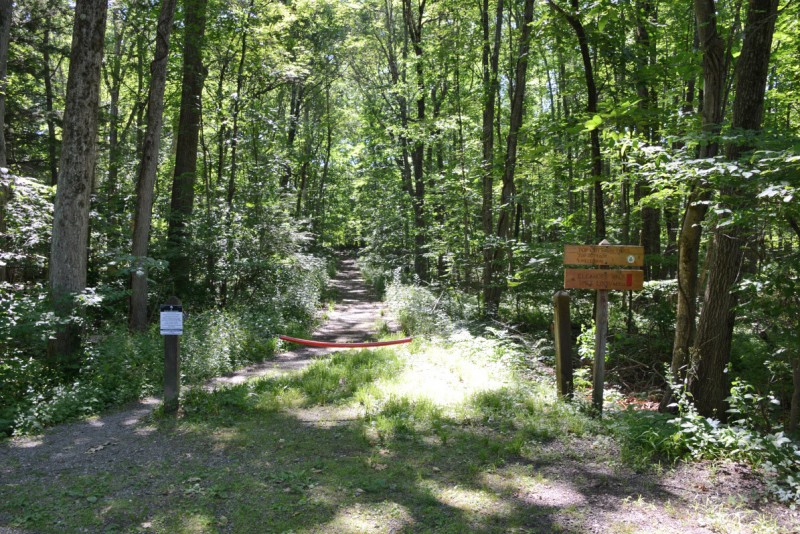
A path at the back of the property leads up the hill to Top Cottage.

FDR helped design her cottage there, which was completed in 1923.
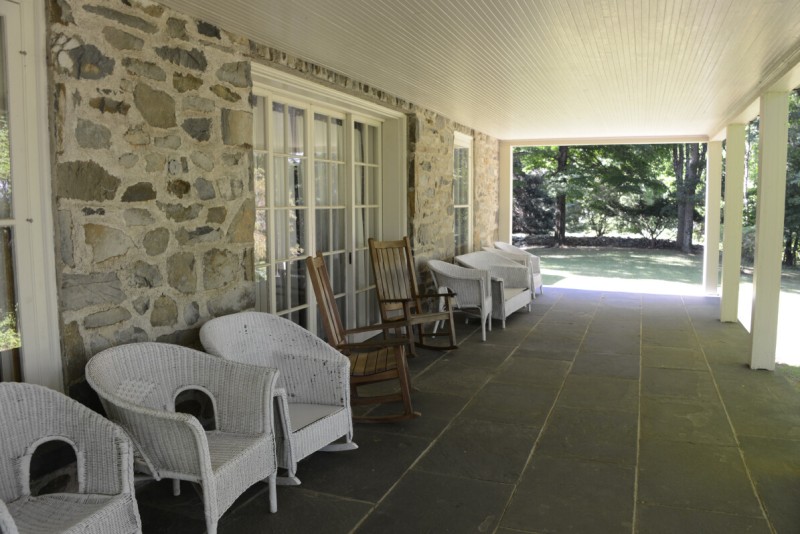
Top Cottage opened to the public in 2001.
